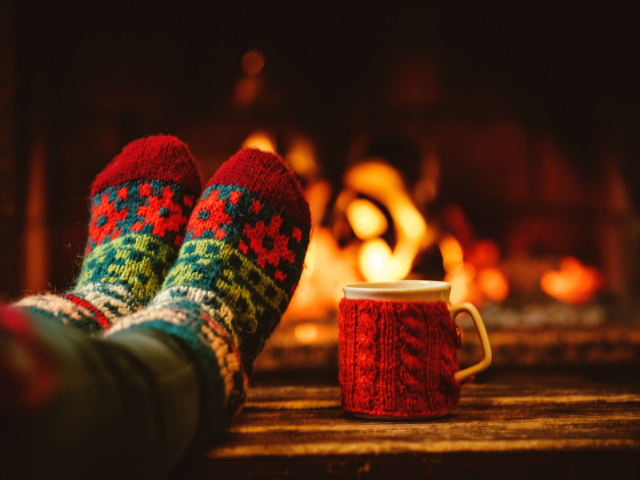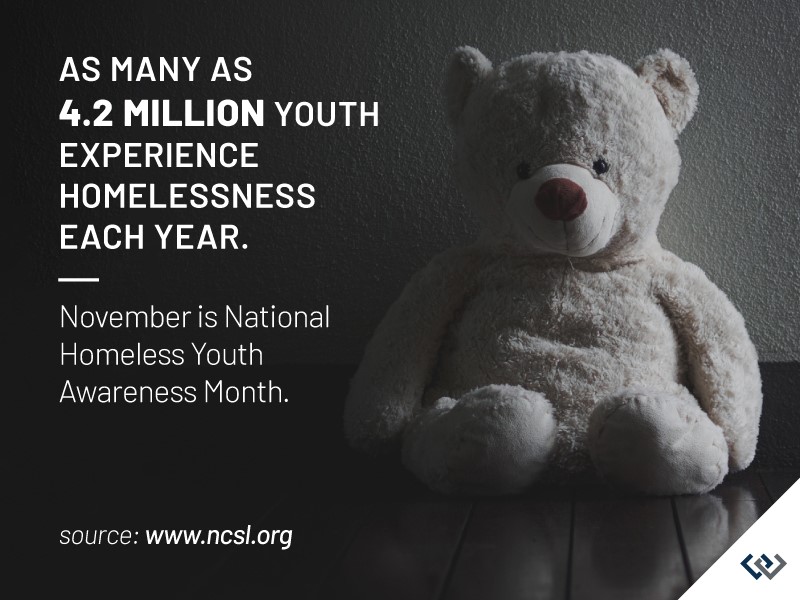Welcome home to this 2019 Windmill home, providing the perfect opportunity to own new construction without the wait just in time for the holidays and new year! 846 South Prairie Drive is a welcoming ranch. The Keystone model features a covered front porch, an open floor plan, main floor laundry and plenty of storage. The full unfinished basement and back yard allows you to move right in and add your own creative touch with endless opportunity! Unlike new construction, appliances and window coverings are included, including washer and dryer. Within walking distance to multiple parks, walking trails and a fishing pond and just minutes away from historic downtown Milliken, this is an opportunity you don’t want to miss especially at this PRICE! Contact Meaghan Nicholl at (970) 497-9045 for your private showing for more information or click the link below for more details.
14 Times


For the 14th time this year, 30-year mortgage rates set a record and hit an all-time low.
Based on data just released by Freddie Mac, rates are now at 2.71%. Their weekly survey of the 30-year mortgage rate dates back to 1971.
Just one year ago rates were at 3.68%.
So, what does this mean for buyers?
Based on a $400,000 loan, current rates result in a monthly payment that would be $212 less than one year ago.
Go for Gold This Thanksgiving


We’re in the thick of autumn now, with Thanksgiving just days away. That means it’s time to start considering how to best showcase your home before the calendar shifts fully into winter. One of the cheeriest bits of fall is the shifting colors that bring a canopy of rustic rainbow hues to a walk through the neighborhood. You can bring that cozy feeling inside yourself with some golden-dipped creativity.
Gilded Pears – Use real or fake pears, whichever you prefer, spray paint gold, and allow them to dry completely. You can add little flags to the top if you’re really feeling crafty.
Magnolia Wreath – Collect some Magnolia branches and use a wreath frame as a base. Spray paint the green side of each leaf with gold and then assemble using wire. Supposedly it’s not as complicated as it looks!
Dipped Pinecones – First, you’ll want to make sure your cones are clean and dry. Apply gold leaf adhesive using a foam brush; deciding how much you add will determine how much of the cone is covered in gold. After they dry, it’s time to add gold leaf, which comes in whisper-thin sheets about 5” square. Wrap it around the cone and use a clean foam brush to rub it into the adhesive. Then give it a light spray with sealant and allow them to dry.
Gold Acorns – Hand pick your acorns, clean, and oven-dry them to make sure they are pest-free. Paint them gold and then add a layer of clear shellac for a shiny look. Lastly, you’ll want to use a hot glue gun to attach the caps since they naturally fall off after the acorns dry. You can use these as filler in a glass vase or simply scatter them on a tabletop.
Shimmering Maple Garland – All you’ll need is a bag of artificial leaves, bought at any craft store, some Elmer’s glue, glitter, and string. Use a paintbrush to apply glue to each leaf and sprinkle lots of glitter over them. Let the glue set, then shake off the excess glitter, punch a hole at the top and attach a ribbon. Tie them all to a large strand and voilà, a perfect garland for the holidays.
Petite Pumpkins – If you are still head over heels for pumpkins, then using small ones for place cards will add some spice to your table. Tape each pumpkin halfway with painters tape, it can be horizontal, diagonal, you pick! Next paint the bottom portion with gold craft paint (may need multiple layers) and with the last layer still wet, generously sprinkle gold glitter over the painted half. After your pumpkin is dry and you’ve shaken off the excess glitter, wrap beading foil tightly around the stem. Leave a little extra at the end for you to bend for your place card.
Beautiful Ranch!

NO HOA! Don’t miss this well maintained beautiful home on a large lot at the end of the cul-de-sac in Evans! 2400 Dock Drive boasts 4 bedrooms, 3 full bathrooms, 2 living areas, and plenty of outdoor space. This home has many upgrades including new carpet and a recently remodeled bathroom. Call for your private showing (970) 980-8349 for more information or click the link below for more details.
https://windermerewindsor.com/listing/119890692
Charming Nunn Property!

841 6th St is an amazing ranch style home and has a great deal to offer with large living room windows allowing an enormous amount of natural light! It contains 3 beds, 2 baths, eat-in kitchen with a fully finished basement and has a new roof, newer septic and furnace. It is positioned on a spacious south facing lot with a new fully fenced back yard. Don’t miss the opportunity to see this incredible property in Nunn! Please wear booties and masks inside the home! Contact Angie Clauser at (970) 590-9860 for your private showing for more information or click the link below for more details.
Beautifully Updated Townhome!

Mid-Town Location! 705 E Drake Rd L-50 has new flooring, new paint, new kitchen cabinets and counter, new bathroom and electrical panel. Enjoy the spacious kitchen with a large area for a dining table. New stainless steel kitchen appliances and washer/dryer. This condo is very energy efficient with all new LED lighting throughout. HOA covers nearly everything including heat, water, sewer, trash and exterior maintenance. All you have to pay is the electric bill! Enjoy the back patio overlooking a large HOA maintained open area. There is also a clubhouse, pool and sauna. Great location close to the dog park, CSU, and within walking distance to Sprouts, specialty shops, and restaurants. Contact Aaron Pearson at (970) 646-3035 for your private showing for more information or click the link below for more details.
https://windermerewindsor.com/listing/120107438
Remodeling Impact

Americans spend $400 billion per year remodeling their homes.
So, which remodeling investment gives the best return when it comes to resale value?
It should come as no surprise, especially leading up to Thanksgiving, that the best money to spend upgrading your home is in the kitchen.
It’s the place where most homeowners spend most of their waking hours.
According to the research from the National Association of Realtors, it’s where remodelers will see the biggest return on investment.
Here is the ranking of various projects in terms of the value it adds to the home:
- Complete kitchen remodel
- Kitchen upgrade
- HVAC replacement
- Owner’s suite renovation
- Bathroom renovation
- Finishing a basement
- Adding a bathroom
Hosting for the Holidays


Image source: Shutterstock
Whether you’re planning on having visitors fill your home with holiday cheer or keeping the holiday celebrations to a minimum, there are steps you can take to reduce the stresses of gatherings during the COVID-19 pandemic. Many homeowners have become accustomed to applying the following principles to their at-home lifestyles thus far this year, and this holiday season is no different.
Disinfect
The first step in getting your home ready for the holidays is to disinfect. When preparing to host, it’s natural to tidy up your home and give everything a cleanse with soap and water. However, additional measures need to be taken this year to reduce the risk of spreading germs.
- Proper disinfectants: The CDC (Centers for Disease Control and Prevention) recommends a 70% alcohol solution—or four teaspoons of bleach per quart of water—for reducing the chance of spreading COVID-19. Be sure to ventilate your home as you prepare to disinfect to avoid any harmful effects of toxins. After applying the bleach solution, let it stand for up to ten minutes before wiping it off.
- Surfaces: The most problematic surfaces for germs are high-touch areas. Doorknobs, banisters, toilets, sinks, refrigerator and door handles, light switches, and faucets are all likely candidates for spreading germs, so be sure to direct your disinfecting attention there.
- Your guests: In any event itinerary or reminders you send out, make sure to emphasize the importance of frequent hand washing, especially before and after touching communal items and eating. On the day your visitors come over, provide plenty of disposable towels and hand sanitizer in eating areas, food-prepping stations, and bathrooms. Place garbage cans nearby to reduce contact.
Keep a Distance
As the host, you have the opportunity to create a cozy, comfortable environment that still leaves room for practicing social distancing and other preventative measures. Know that indoor gatherings with poor ventilation pose a greater risk than those with good ventilation and that indoor gatherings are altogether more risky than outdoor. Members of different households should remain six feet apart to reduce the chance of spreading infection. Encourage masks to be worn at all times except when eating.
If you are planning an outdoor gathering, get creative with your lighting décor while adding some warmth for your guests. Space heaters, patio heaters, parasol heaters, and propane fireplaces have become more popular as homeowners look for ways to entertain safely and comfortably.
Virtual Gatherings
If in-person gatherings are too risky for you and your family, virtual gatherings are a way to celebrate with friends and extended family members while being apart. Here are some ideas for hosting virtually this holiday season:
- Choose fun activities for the group to share virtually. Arrange a time for a virtual gift exchange, sharing the gifts you’ve bought each other.
- Try a virtual recipe share with friends and family. Send out a recipe for everyone to enjoy and schedule a video call to share in the cooking process.
- Select a movie and showtime to have everyone settle in with their cup of hot cocoa or tea and enjoy a flick together.
No matter the size of the gathering in your home, these steps will help you navigate the stresses that come with hosting celebrations. For more information and advice for gatherings during what will be a unique holiday season, visit the CDC’s website here: CDC Guidelines for Holiday Celebrations
November is Homeless Youth Awareness Month


In 2007, November was declared National Homeless Youth Awareness Month to shine a light on the homeless experiences of young people and their families. The Windermere Foundation supports the following organizations dedicated to supporting youth in their communities, all of which are providing ways to give back during the COVID-19 pandemic. To support these organizations, donate to the Windermere Foundation through your local Windermere office to ensure community funds help community needs.
New Avenues for Youth – Oregon
The Windermere Foundation has supported New Avenues for Youth in their mission to address youth homelessness in Oregon, providing services like education, job training, counseling, and supportive housing.
Partners Mentoring Youth – Colorado
Based in Fort Collins, Partners Mentoring Youth has empowered youth and community members to reach their full potential through mentoring, prevention, education, and strategic partnership since 1978. Since that time, the organization has continually expanded their mission and programming to fit the needs of their community and are continuing to do so in the face of COVID-19.
The Mockingbird Society – Washington
The Mockingbird Society is dedicated to getting youth into safe, supportive and stable homes by transforming foster care. Magnifying the inequalities faced by young people and families experiencing foster care and homelessness, the COVID-19 pandemic has heightened the need for the organization’s work. The Mockingbird Society is supporting young people who have lost jobs and/or housing, while providing trauma training and delivering emergency policy guidance to families.
Boys and Girls Clubs of America
Supported by the Windermere Foundation across our network, the Boys and Girls Clubs of America enables young people in need to reach their full potential. During the pandemic, the organization has partnered with local clubs to develop a national strategy to serve their local communities.
Present in neighborhoods throughout our footprint and more than 10,000 communities nationwide, the YMCA is committed to helping communities to learn, grow and thrive, while empowering youth to reach their full potential. The Y has stepped up their emergency food services programs to address increased community need.
Beyond the organizations highlighted here, the Windermere Foundation also supports YouthCare (Seattle, WA), Bridge Meadows (Portland, OR), and the North East Youth Center (Spokane, WA), all dedicated to serving youth in their communities. For more information on how you can support homeless youth in your community, talk to your Windermere agent about what organizations are being supported locally.
To find out more about the Windermere Foundation or to make a donation, please visit windermerefoundation.com.
A Little Perspective

Here’s a little perspective on the inventory of homes for sale in today’s market…
First we’ll look at Metro Denver:
- The average number of residential listings for sale at this time of year is 15,577
- The highest-ever for this time of year is 29,722 which occurred in 2006
- The number of listings right now is 4,821
- So, inventory in Metro Denver is roughly one-third of the average and 25,000 fewer than the highest-ever.
- DMAR is the source of the stats listed above
Now, Northern Colorado:
- Larimer County has 802 active listings today
- Based on 10 years of data, this is the lowest it has ever been
- The high in Larimer County occurred in 2010 with 2608 listings so today’s inventory is one-third of what it was 10 years ago.
- Inventory today in Weld County is 727 which isn’t the lowest-ever.
- The lowest during the last 10 years was 2017.
The highest was 2010 with 1791 properties so today there are roughly 1,000 fewer properties to choose from.
 Facebook
Facebook
 X
X
 Pinterest
Pinterest
 Copy Link
Copy Link


